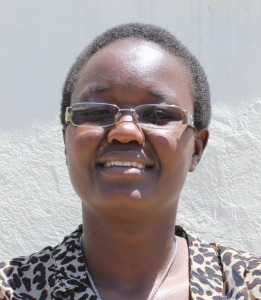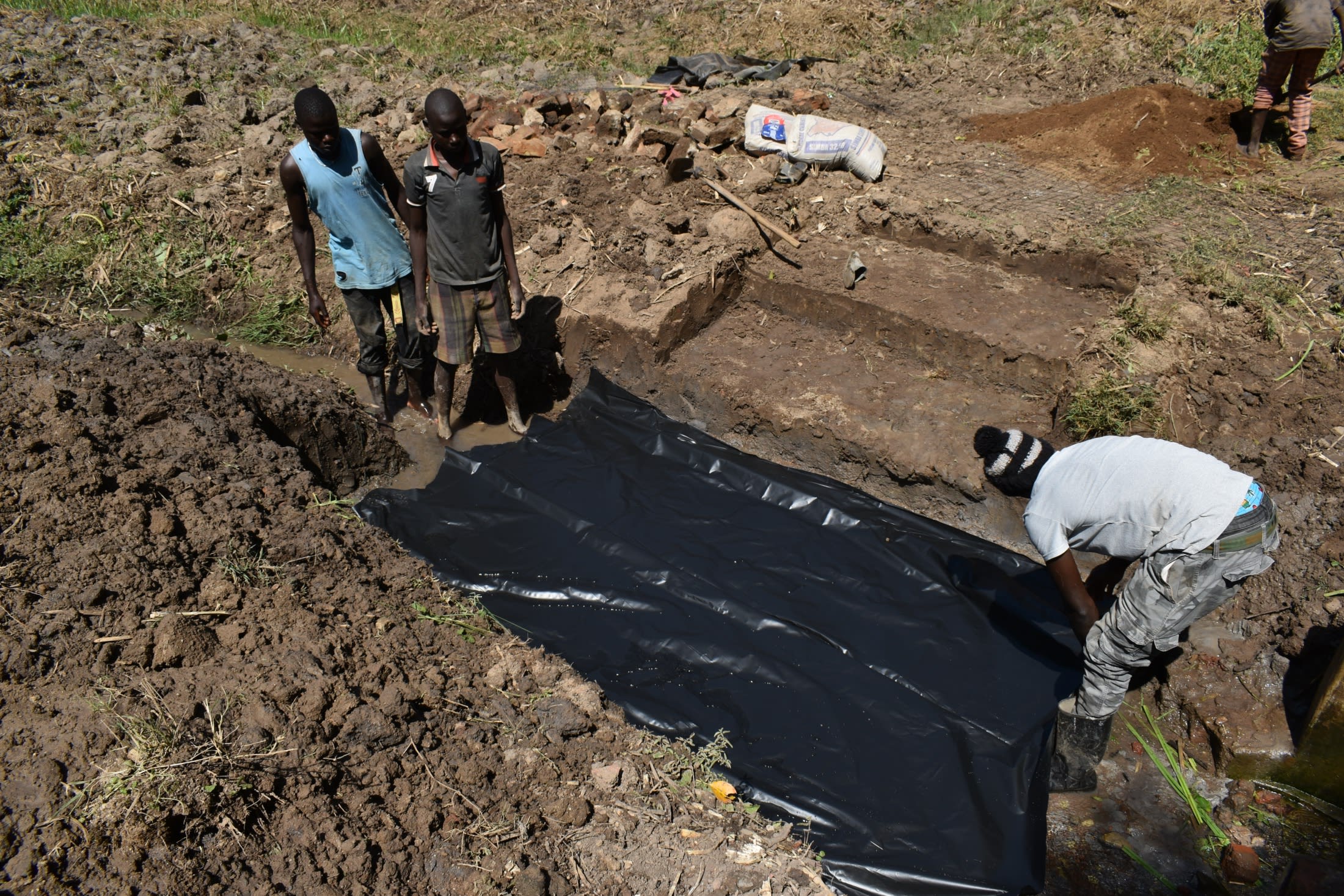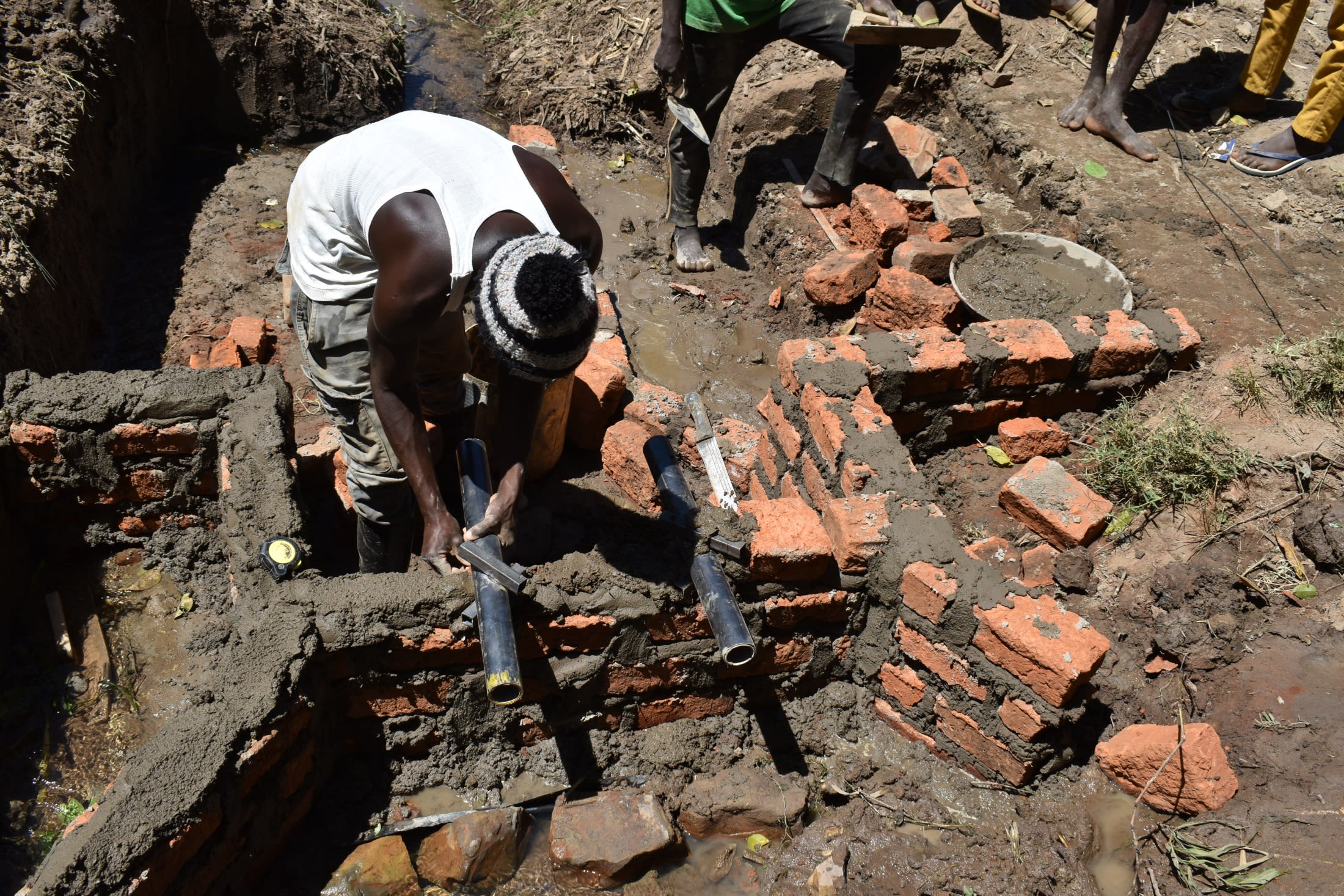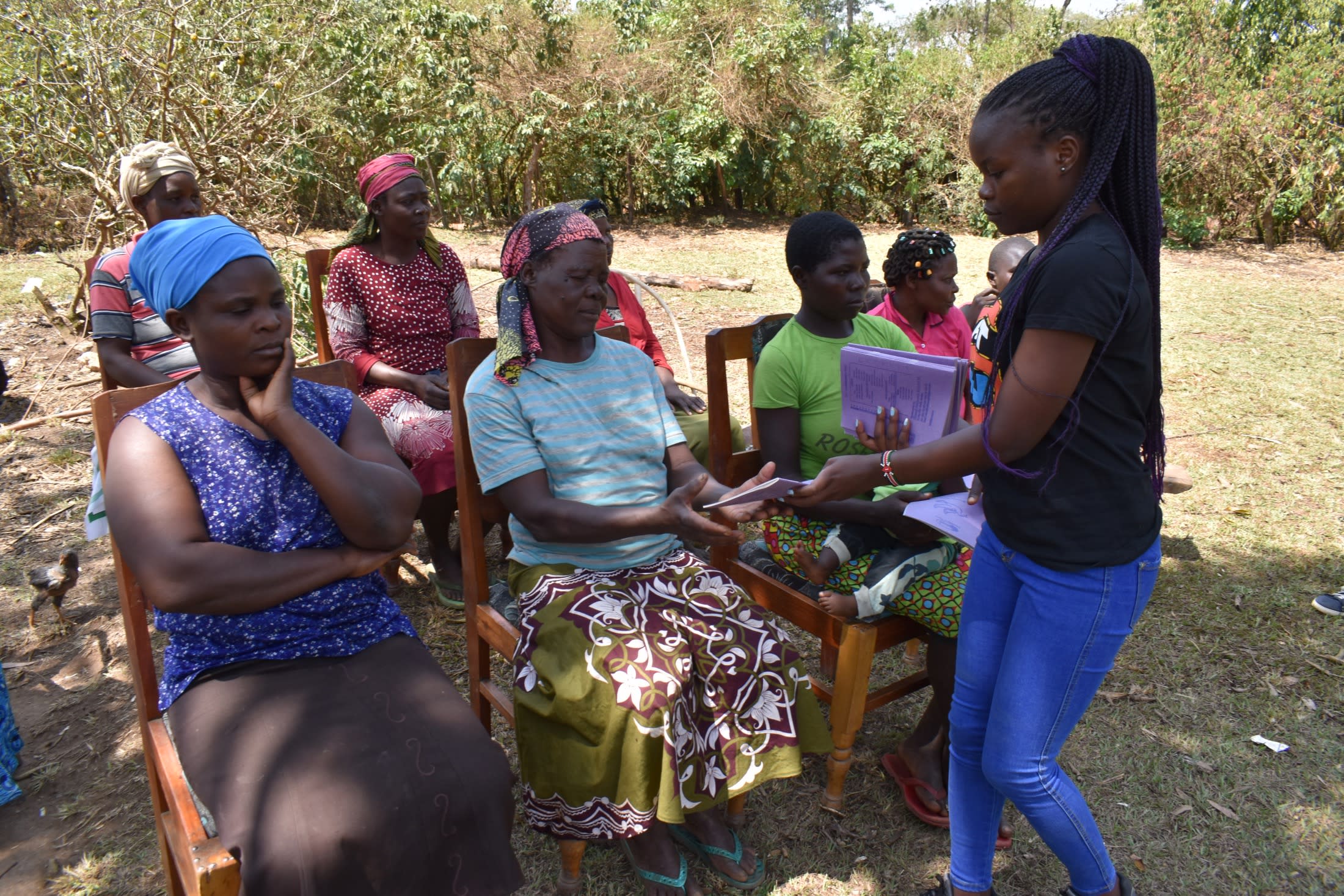For the 200 people living in Tengeti, collecting water every day from their spring is a time-consuming and risky endeavor, but one they must do because it is their only water source.
"The spring was partially protected by the community members fifteen years ago. Over the years, the spring structure has become weak, and currently, its state is wanting. According to the community members, fetching water takes more of their time, and they find themselves not doing other things because they spend a lot of time in the spring," said our field officer Olivia Bomji.

Olivia described the current state of the improperly protected spring: "Whoever constructed the spring did not capture all the spring eyes, and this reduced the discharge of water from the pipes. The water point is always overcrowded, and this has led to quarrels and conflicts among the community members. Queuing for hours to get water from the spring, especially during the dry season, forced the community leader to form a committee to resolve conflicts because it is chaotic and hard to control them as everyone wants to get water first."

"[I] am not happy fetching water from the spring because stepping on the water makes my clothes dirty, and sometimes [I'm] not sure if I will get home with my container still intact. I have broken my mum's containers because of falling while carrying water and this makes me sad. I hope and pray that there will be an intervention that will enable me to love fetching water from the spring," said 9-year-old Derrick W, shown above collecting water while standing in water at the spring.
"The water coming from all sides of the spring has weakened the structure, and this has affected the quality of water too. During the rainy season, all the dirty water is washed down in the spring, and because the current structure is weak, the parents fear for the safety of their children. Most of the community members complained of injuries and falls that they get while fetching water," said Olivia.
We must rebuild the spring so the water can be appropriately filtered and flow only from the collection pipes. Drainage channels should be installed so the water will flow away from the collection box to avoid standing water, and stairs should be added to make access safer and more manageable. And finally, a fence should be added to keep wildlife at bay.
"As a mother having clean water in the house gives me joy, but currently, I have no water because I fell and [sprained] my ankle in the spring. [I] am not comfortable to even let my children go to the spring alone; this is because I don't want them to fall as well. Apart from falling, my children cough a lot as a result of drinking [the] water. I pray that one day the spring will be protected and I will be able to fetch clean and safe water comfortably without fear of falling," said 48-year-old farmer Mrs. Everlyne Wesonga, shown carrying water home from the spring.

"The community members, especially the young children, get sick of typhoid as a result of using [the] water, especially during the rainy season. This has drained the parents financially because they have to take their children to the hospital to seek treatment, after which they pay huge bills," said Olivia.
"Protecting the spring will enable the community to access clean and safe water in all seasons. The accessibility will improve because all of the young and the old will be able to fetch water comfortably from the pipe and use the stairs. Waterborne diseases like typhoid will be a thing of the past, and there will be clean and safe water flowing all the time," Olivia concluded.
What We Can Do:
Spring Protection
Protecting the spring will help provide access to cleaner and safer water and reduce the time people have to spend to fetch it. Construction will keep surface runoff and other contaminants out of the water. With the community's high involvement in the process, there should be a good sense of responsibility and ownership for the new clean water source.
Fetching water is a task predominantly carried out by women and young girls. Protecting the spring and offering training and support will, therefore, help empower the female members of the community by freeing up more of their time and energy to engage and invest in income-generating activities and their education.
Training on Health, Hygiene and More
We work closely with community leaders to put together a small group of people to attend a hygiene and sanitation training. This select, yet representative, group of people to will then act as ambassadors to the rest of the community to share what they learn.
The training will focus on improved hygiene, health, and sanitation habits in this community. With the community's input, we will identify key leverage points where they can alter their practices at the personal, household, and community levels to affect change. This training will help to ensure participants have the knowledge they need about healthy practices and their importance to make the most of their water point as soon as water is flowing.
Our team of facilitators will use a variety of methods to train community members. Some of these methods include participatory hygiene and sanitation transformation, asset-based community development, group discussions, handouts, and demonstrations at the spring.
One of the most important issues we plan to cover is the handling, storage, and treatment of water. Having a clean water source will be extremely helpful, but it is useless if water gets contaminated by the time it is consumed. We and the community strongly believe that all of these components will work together to improve living standards here, which will help to unlock the potential for these community members to live better, healthier lives.
We will then conduct a small series of follow-up trainings before transitioning to our regularly scheduled support visits throughout the year.
Training will result in the formation of a water user committee, elected by their peers, that will oversee the operations and maintenance of the spring. The committee will enforce proper behavior around the spring and delegate tasks that will help preserve the site, such as building a fence and digging proper drainage channels. The fence will keep out destructive animals and unwanted waste, and the drainage will keep the area's mosquito population at a minimum.




 Protected Spring
Protected Spring
 Rehabilitation Project
Rehabilitation Project


































